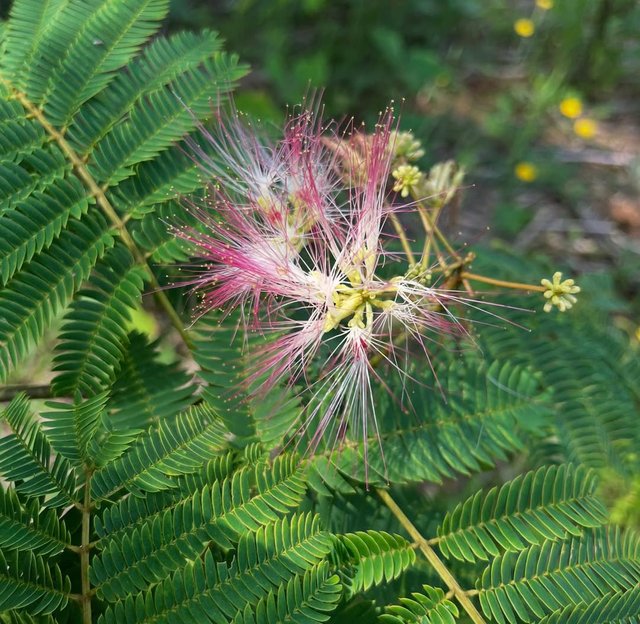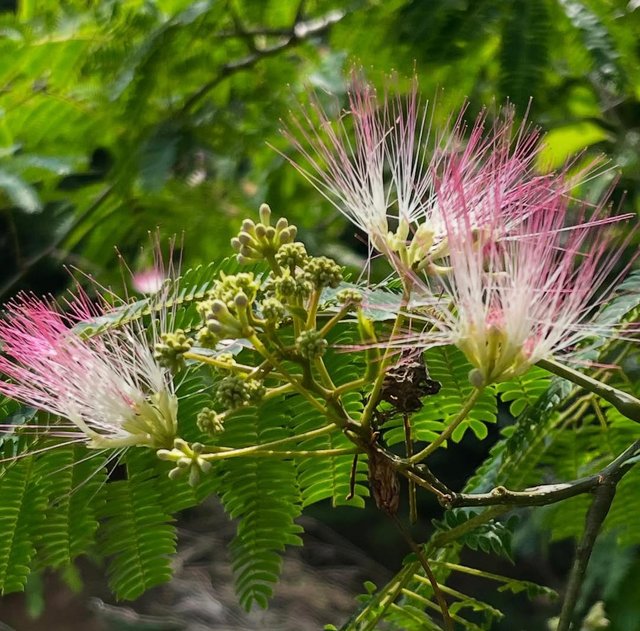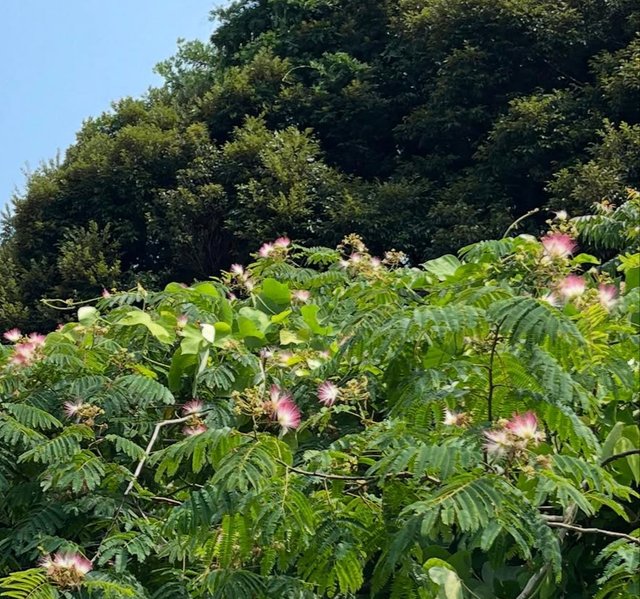Persian Silk Tree
In the world of flowering trees, few are as mesmerizing or poetic as the Persian Silk Tree—Albizia julibrissin. With its delicate, silky pink blossoms and fern-like foliage, this ornamental tree is both a visual marvel and a botanical wonder, earning it nicknames like the “silk tree,” “mimosa,” and even “sleeping tree.”The Persian Silk Tree is native to a wide stretch of Asia, particularly Iran (Persia), China, Korea, and parts of India. Despite its common name referencing Persia, its range extends far beyond the Middle East. Today, it's found around the globe as an ornamental plant in warm temperate to tropical regions.
Botanically,sharing kinship with acacias and other nitrogen-fixing plants. The species name julibrissin is derived from the Persian word “gul-i abrisham” — literally meaning “silk flower” — and it's a fitting name for the gossamer-soft, powder-pink tufts that crown the tree in full bloom.The Persian Silk Tree is famous for its fluffy pink flowers, which appear like shimmering fireworks from late spring through summer. These blossoms are made of clusters of long stamens, giving them their silky, feather-like appearance. When the wind blows, they tremble and dance—a true spectacle that feels almost otherworldly.
One of the most enchanting aspects of Albizia julibrissin is its nyctinastic behavior—a botanical sleep cycle. At night, or on cloudy days, the leaves gently fold together, as if the tree is tucking itself in for a nap. This phenomenon has inspired names like “sleeping tree” or “night sleeper” in many cultures.This daily movement isn't just poetic; it helps reduce water loss and may deter nighttime herbivores.




